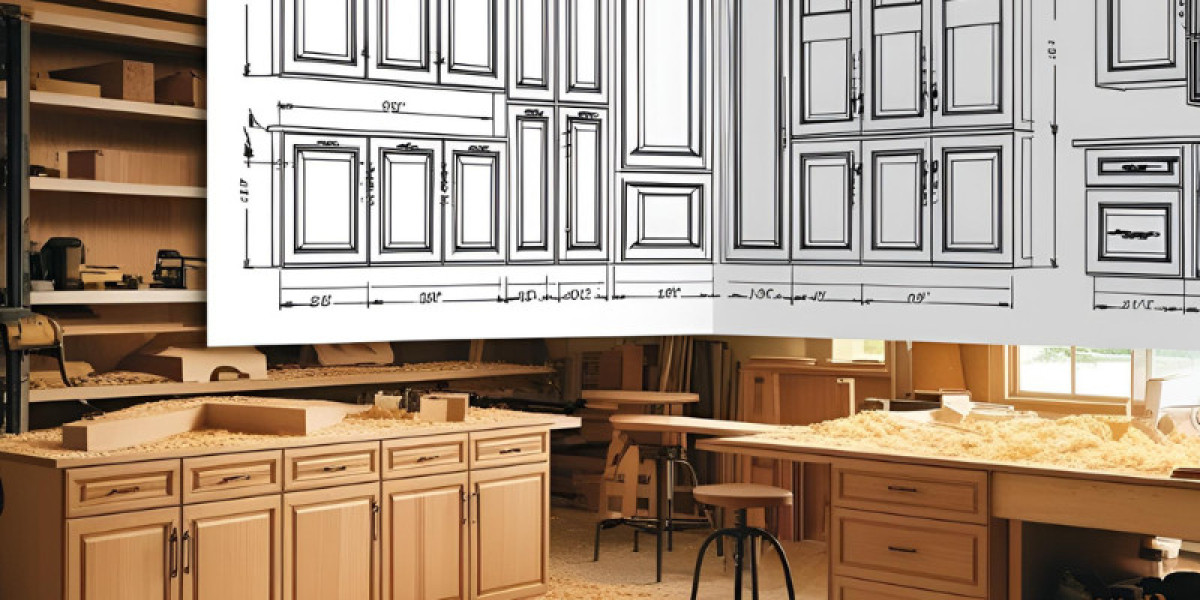Millwork shop drawings are an essential component in the design and construction of commercial interiors. These detailed, precise drawings provide the blueprint for custom woodwork, cabinetry, and architectural millwork elements, ensuring that every piece fits perfectly within the interior space and aligns with the overall design vision.
In commercial settings, where functionality, aesthetics, and durability are critical, millwork shop drawings serve as a bridge between the designer's conceptual plans and the final installation.
These drawings contain highly detailed information, including measurements, materials, finishes, and construction techniques, allowing contractors and fabricators to create pieces that are not only structurally sound but also visually appealing.
They provide clear guidance on the installation process, ensuring that every aspect of the millwork, from custom furniture and reception desks to wall panels and cabinetry, is manufactured and installed with precision.
Moreover, millwork shop drawings help avoid costly mistakes and delays by providing a thorough and accurate understanding of the project’s requirements before the manufacturing process begins.
What Are Millwork Shop Drawings?
Millwork shop drawings are detailed plans or blueprints used by carpenters, woodworkers, and other professionals in the millwork industry to create custom wood products for buildings. These products can include things like cabinets, doors, windows, moldings, and trim. The purpose of millwork shop drawings is to show how these wood elements should be made, installed, and finished.
The drawings typically include dimensions (sizes), materials (type of wood or finishes), and construction details (how parts will fit together). They may also include instructions for things like cutting, shaping, and assembling pieces. These drawings ensure that everyone involved in the project, from designers to builders, is on the same page.
Millwork shop drawings are created after the design phase, once the architectural plans are approved. They are important because they help avoid mistakes, miscommunication, or delays during construction. By following these detailed plans, woodworkers can produce pieces that match the design and meet the required specifications.
In addition to being technical, millwork shop drawings also help in estimating costs and timelines. They ensure that the wood products will fit properly in the space and look exactly as intended. Overall, they are a crucial part of any building or renovation project involving custom woodwork, helping to turn a design concept into a finished, functional piece.
The Role in Commercial Interiors
Millwork plays a key role in commercial interiors by enhancing the look and function of spaces like offices, restaurants, hotels, and retail stores. It refers to custom wood products like cabinets, countertops, shelving, doors, and trim, which are designed and built to fit a specific commercial space. These elements add style, create storage solutions, and improve the overall atmosphere of the space.
In commercial interiors, millwork is important for both aesthetic and practical reasons. Custom woodwork allows businesses to have unique, personalized spaces that reflect their brand, whether it’s a sleek, modern office or a warm, inviting restaurant. The materials used in millwork, such as wood, veneer, or laminate, can be chosen to match the design vision and style of the building.
Millwork also adds functionality. In offices, custom cabinets and desks help organize the space and provide efficient storage. In retail spaces, custom displays and counters can enhance the shopping experience by appealingly showcasing products. In hotels or restaurants, millwork can be used to create inviting lobbies, stylish bars, or well-designed kitchen areas.
Overall, millwork in commercial interiors helps to improve both the appearance and functionality of a space, making it more attractive, comfortable, and efficient for its users. Whether for design, storage, or organization, millwork is a vital part of creating a successful commercial environment.
Process of Creating and Reviewing Millwork Shop Drawings
Creating and reviewing millwork shop drawings is a key step in the construction and design process, ensuring that custom woodwork or cabinetry is built accurately and efficiently.
The process starts with the design team providing basic sketches, concepts, or specifications for the millwork. These ideas include dimensions, materials, finishes, and details about how the pieces should look and function. A millwork drafter then takes this information and creates detailed shop drawings. These drawings show all the necessary measurements, materials, joinery methods, and assembly instructions, often including 3D views to help the builders understand the design.
Once the shop drawings are complete, they are sent to the project team for review. This includes the architect, contractor, and sometimes the client. They carefully check if the drawings align with the original design, if all dimensions are correct, and if any technical or structural issues need fixing. They may also review material choices and finishes to ensure they meet the project’s requirements.
After review, any feedback is addressed, and the millwork drawings are revised if necessary. The final approved version is then sent to the millwork shop for fabrication. The shop will use these drawings to cut, assemble, and finish the millwork accurately.
In conclusion, millwork shop drawings are crucial for clear communication between designers, builders, and clients. They ensure the final product is built according to plan and fits perfectly into the space.
Stakeholders Involved
In any construction or design project, several key stakeholders are involved, each playing a crucial role in ensuring the project's success. These stakeholders collaborate to make decisions, provide expertise, and contribute to the overall outcome.
Client/Owner: The client or owner is the person or organization funding the project. They define the project’s goals, budget, and timeline. Their needs and preferences guide the design and execution.
Architect: The architect is responsible for designing the project, ensuring it meets both aesthetic and functional requirements. They create the initial plans and work with other professionals to refine them.
Contractor: The contractor is in charge of the actual construction work. They manage labor, materials, and equipment, ensuring the project is completed on time and within budget. They often work with subcontractors for specialized tasks.
Millwork Fabricator: In projects involving custom woodwork, the millwork fabricator is responsible for creating the detailed millwork items (like cabinets, doors, and moldings) based on shop drawings.
Project Manager: The project manager oversees the project’s overall progress, coordinates between different teams, and ensures the project stays on track. They handle scheduling, budget, and any issues that arise during construction.
Engineer: Engineers (structural, mechanical, electrical, etc.) ensure that the project meets safety standards and that all systems function properly. They provide technical support and design solutions.
The End Note
In conclusion, millwork shop drawings are an indispensable element in the design and construction of commercial interiors. They provide a detailed and precise representation of custom woodwork, ensuring that each piece is crafted to fit perfectly within the space and aligns with the overall design vision.
By offering clear guidance on dimensions, materials, finishes, and construction techniques, these drawings facilitate smooth communication between designers, contractors, and fabricators, reducing the likelihood of errors and delays.
Furthermore, they play a critical role in translating conceptual designs into tangible, functional, and aesthetically pleasing elements, which is essential in creating a successful and impactful commercial space.
Through collaboration and meticulous attention to detail, millwork shop drawings help bring design intentions to life, making them a cornerstone of effective commercial interior projects.








